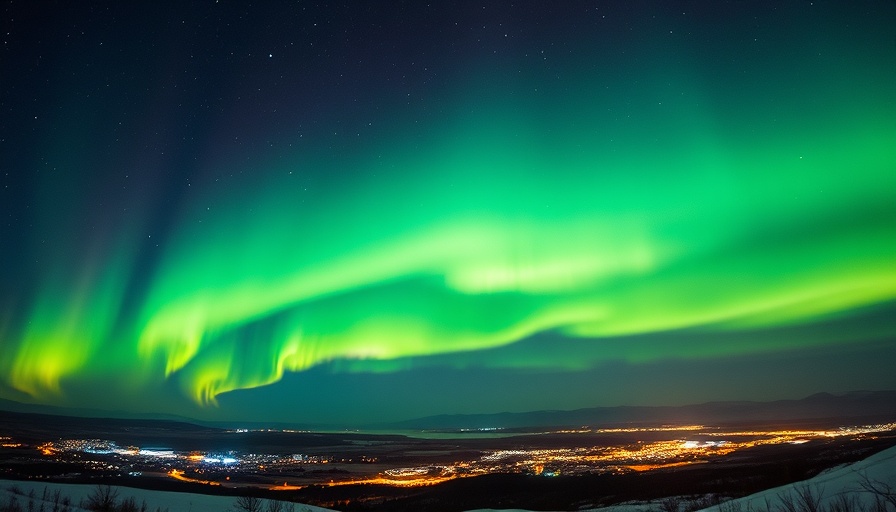
Solar Storms Ignite Aurora Opportunities
After an exciting weekend of solar activity, the northern lights, or aurora borealis, could grace the skies of several U.S. states once more. The recent coronal mass ejection from the sun, while not as intense as last year's record phenomenon, still offers a tantalizing glimpse into the wonders of space weather.
The Science Behind the Lights
The sun operates on an 11-year solar cycle where its activity swells and wanes, leading to an increase in auroras. During its peak phase, we witness more frequent and widespread displays of the northern lights. This particular cycle has seen the sun's magnetic poles swap places, triggering unique magnetic events that enhance auroral activity. Interestingly, these dazzling displays aren't confined to the Arctic anymore; they are making appearances in states like Montana, Michigan, and even New York.
What Solar Storms Can Do
Solar storms can have more far-reaching consequences than just beautiful skies. According to the NOAA, high-energy particles colliding with Earth’s magnetic field can temporarily disrupt various communication systems, including GPS and radio signals. Historical data points to severe events, like the Carrington Event of 1859, when tectonic disruptions caused auroras as far south as Hawaii, while damaging telegraph systems across North America.
Local and Global Implications of Solar Activity
In addition to affecting communication and power grids, solar storms offer insights into planetary magnetism and climate patterns. International collaboration in monitoring space weather is crucial, as disturbances can also affect airlines and satellite operations. Understanding these impacts enhances our readiness for potential disruptions while emphasizing the need for robust infrastructure to cope with erratic solar activity.
How to Spot the Northern Lights
For those looking to witness the awe-inspiring sights of the northern lights, options abound. The best views are typically found in dark, rural areas away from city lights. Ideal viewing conditions include a clear, uninterrupted horizon and a night free from clouds or moonlight, frequently after sunset. Keep an eye on local forecasts or space weather reports to catch the next opportunity!
As we continue to navigate the effects and benefits of these solar events, it's a reminder of how dynamic and interconnected our world truly is. The northern lights are not just a spectacle but a symbol of our ongoing journey to understand the cosmic forces at play.
 Add Row
Add Row  Add
Add 




Write A Comment